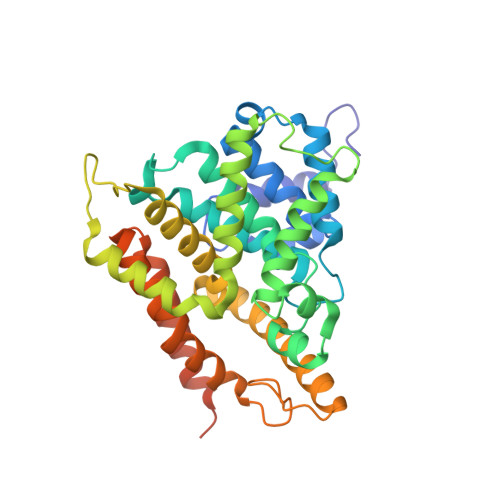The crystal structure of AMP-bound PDE4 suggests a mechanism for phosphodiesterase catalysis
Huai, Q., Colicelli, J., Ke, H.(2003) Biochemistry 42: 13220-13226
- PubMed: 14609333
- DOI: https://doi.org/10.1021/bi034653e
- Primary Citation of Related Structures:
1PTW - PubMed Abstract:
Cyclic nucleotide phosphodiesterases (PDEs) regulate the intracellular concentrations of cyclic 3',5'-adenosine and guanosine monophosphates (cAMP and cGMP, respectively) by hydrolyzing them to AMP and GMP, respectively. Family-selective inhibitors of PDEs have been studied for treatment of various human diseases. However, the catalytic mechanism of cyclic nucleotide hydrolysis by PDEs has remained unclear. We determined the crystal structure of the human PDE4D2 catalytic domain in complex with AMP at 2.4 A resolution. In this structure, two divalent metal ions simultaneously interact with the phosphate group of AMP, implying a binuclear catalysis. In addition, the structure suggested that a hydroxide ion or a water bridging two metal ions may serve as the nucleophile for the hydrolysis of the cAMP phosphodiester bond.
Organizational Affiliation:
Department of Biochemistry and Biophysics and Lineberger Comprehensive Cancer Center, The University of North Carolina, Chapel Hill, North Carolina 27599-7260, USA.
















